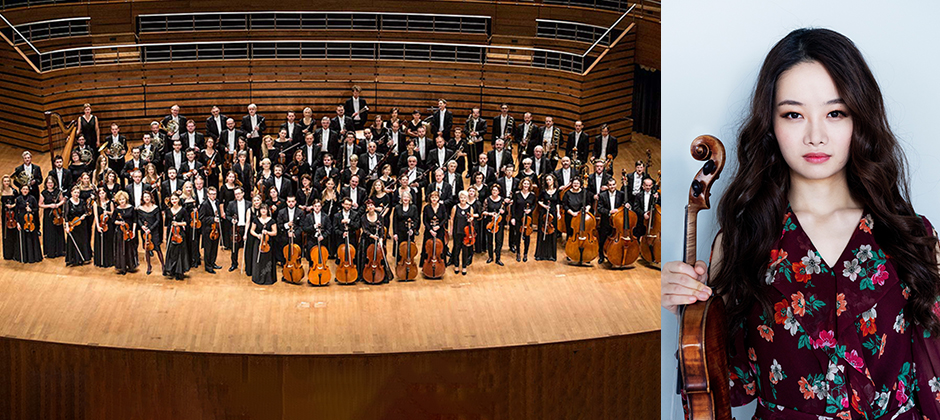
Unfamiliar Sounds from Poland
STANFORD, CA—Could anyone doubt that classical music is the world’s true lingua franca today, drawing together four continents? Consider a Polish orchestra coming here on tour with a South Korean violin soloist who had studied at the Juilliard School, NYC, and Nicaraguan conductor with an Italian name. Playing music from Germany and the Czech Republic from different centuries.
The Polish NFM Wroclaw Philharmonic made a rare swing through Northern California and played two home-grown specials plus the Brahms First. This was a lavish tour to judge by the bulging Mahler-sized orchestra (among other things, seven percussionists, two harps!). This is no royal-palace or capital city orchestra, all spit and polish, but rather a lively, rough-and-ready group, a more individualistic ensemble reflecting its city close to the Czech border.
Their concert at Stanford’s Bing Concert Hall Jan. 31 opened with a student effort, “Symphonic Variations” by Witold Lutoslawski. It’s a splashy, brassy, antsy nine-minute opus, as if intended for the title music of a major motion picture. It was just dissonant enough to upset the composer’s conservative professor. Little did he know, this was but a portend of what was to come as Lutoslawski emerged as the leading Polish symphonist of post-World War Two, heard frequently at the S.F. Symphony in the 1980s.
The concert center piece was the Violin Concerto No. 1 (1916) by Karol Szymanowski, best known today for his opera “King Roger.” His style is considerably influenced by the visionary Russian Scriabin and his futuristic harmonies of the cosmos, along with glints of some Ravel. In the 25-minute through-composed concerto the composer guides us along many wide-ranging, contrasting episodes suggesting (to me) stormy seas, perhaps a sea nymph or two, and amiable meanderings.
Violin soloist was Bomsori Kim, who had won prizes at both the Queen Elisabeth and Tchaikovsky Competitions. She produces a highly lyric tone—some would say angelic—reaching unerringly to the high fingerboard range. But her soaring, delicate tones on the Guadagnini instrument were ill-suited to the large orchestra that threatened constantly to drown her out. Her cadenza with the glissandi and double stops was elegant.
The concert closed with a rough-hewn rendition of Brahms’ Symphony No. 1, marred by lack of balances between the various performing sections.
At the helm was the new music director Giancarlo Guerrero from Nicaragua, master of extravagant podium theater, pirouetting about the podium with practiced finger-flicking gestures intended seemingly more for us onlookers than for the musicians. He also conducts the Nashville Symphony in the US. He played two encores rousing the audience: Dvorak’s Slavonic Dance No. 8 and the “Thunder and Lightning” Polka by Johann Strauss Jr.
MUSIC NOTES—The orchestra featured 35 women on stage, a stronger distaff showing than by many touring orchestras visiting our shores…Among the Szymanowski works I yearn most to hear: Orchestral songs set to texts of James Joyce….In the vibrant acoustics of Bing Hall, large orchestras like this one sound overly reverberant, producing booming brass sections and timpani sounding like a cannonade. Smaller ensembles and chamber music however work very well here…How to pronounce Wroclaw? A university professor explains it as Vrotswahv (with a silent L). A city of 641,000, it was formerly called Breslau, in Germany till World War Two….Why play Brahms? Because the university there had invited Brahms, who in gratitude wrote the Academic Festival Overture, the most astute college songfest ever.
NFM WROCLAW PHILHARMONIC in concert Jan. 31 at Bing Concert Hall, Stanford, auspices of Stanford Live. For info, call (650) 724-2464, or go online: www.live.stanford.edu.